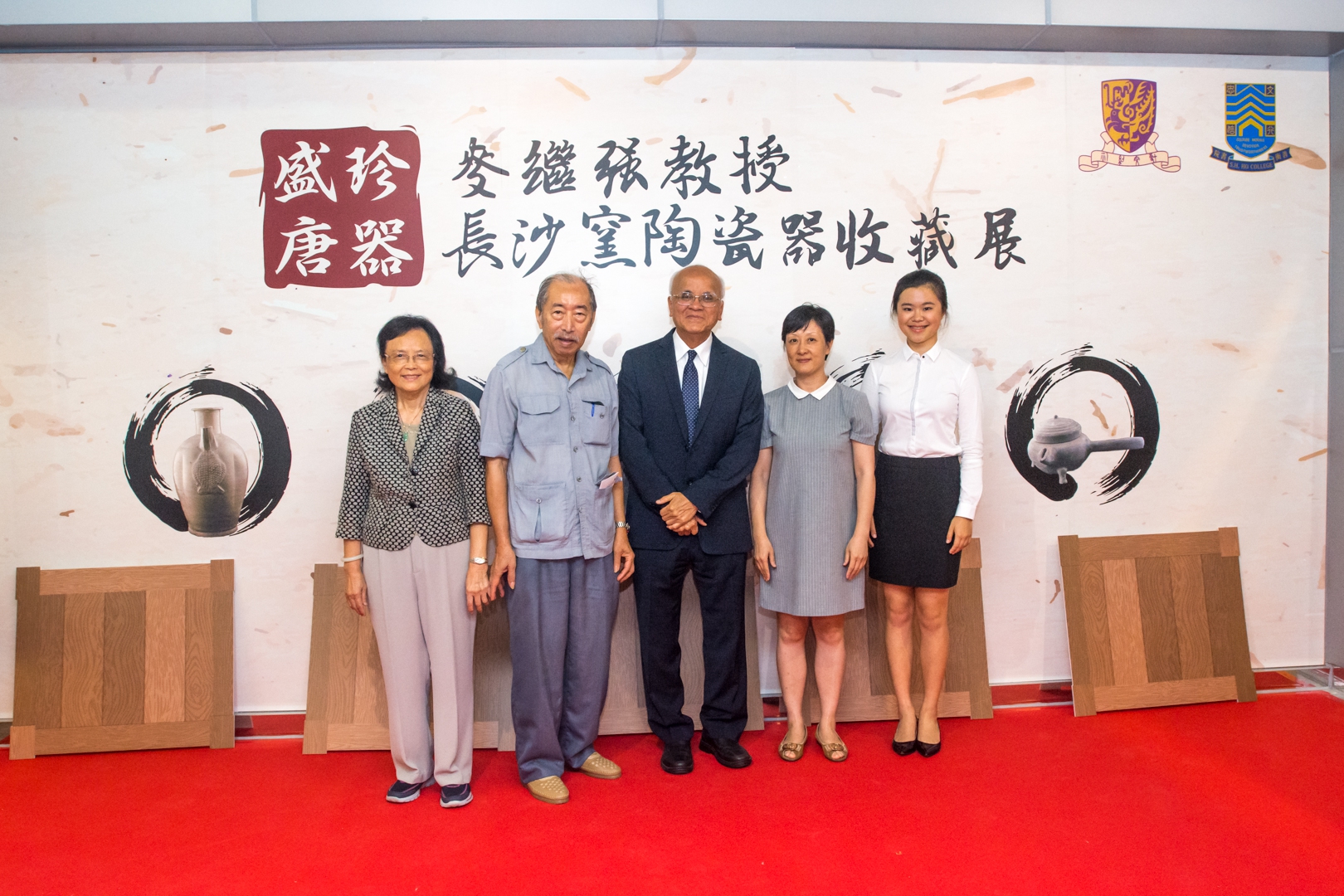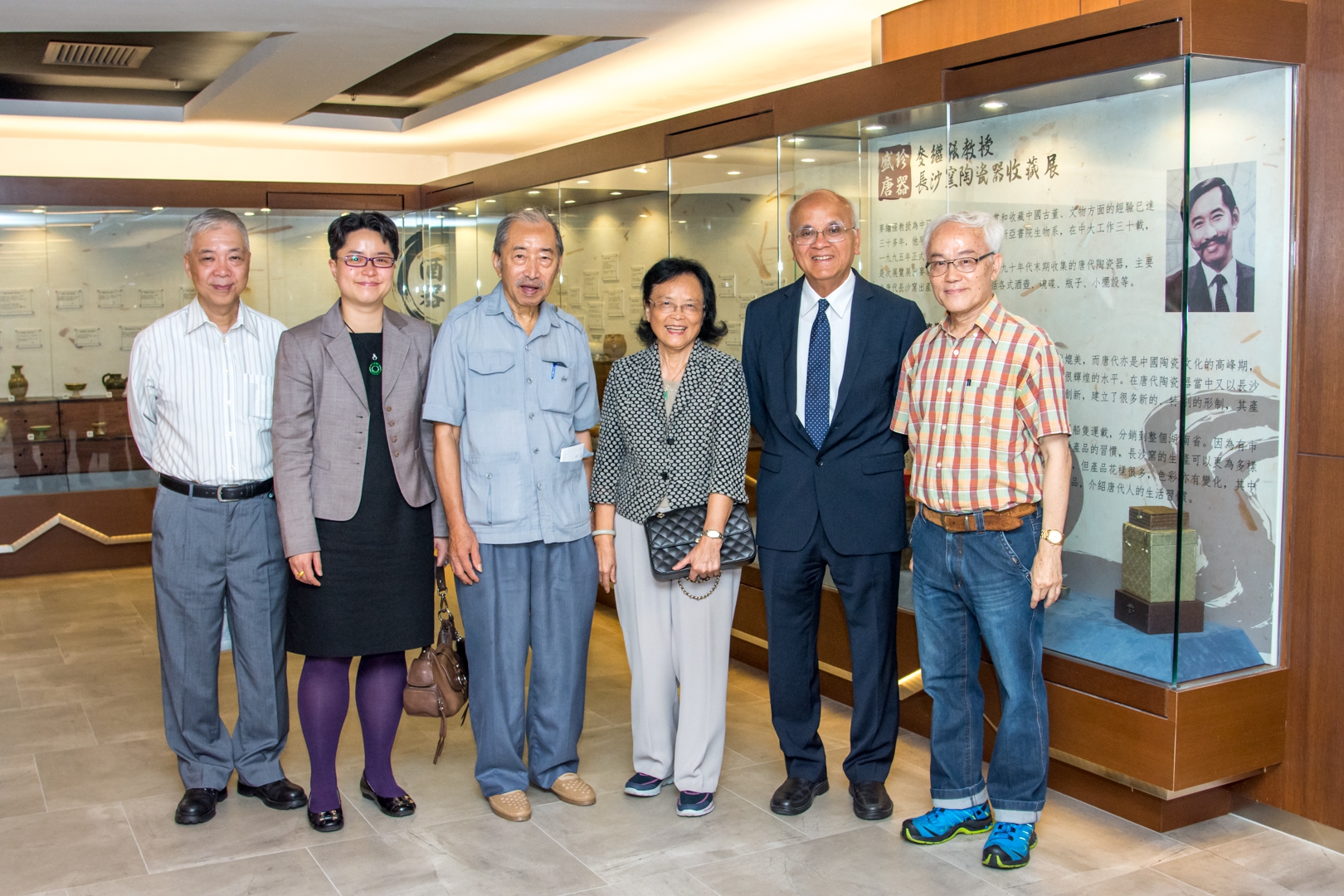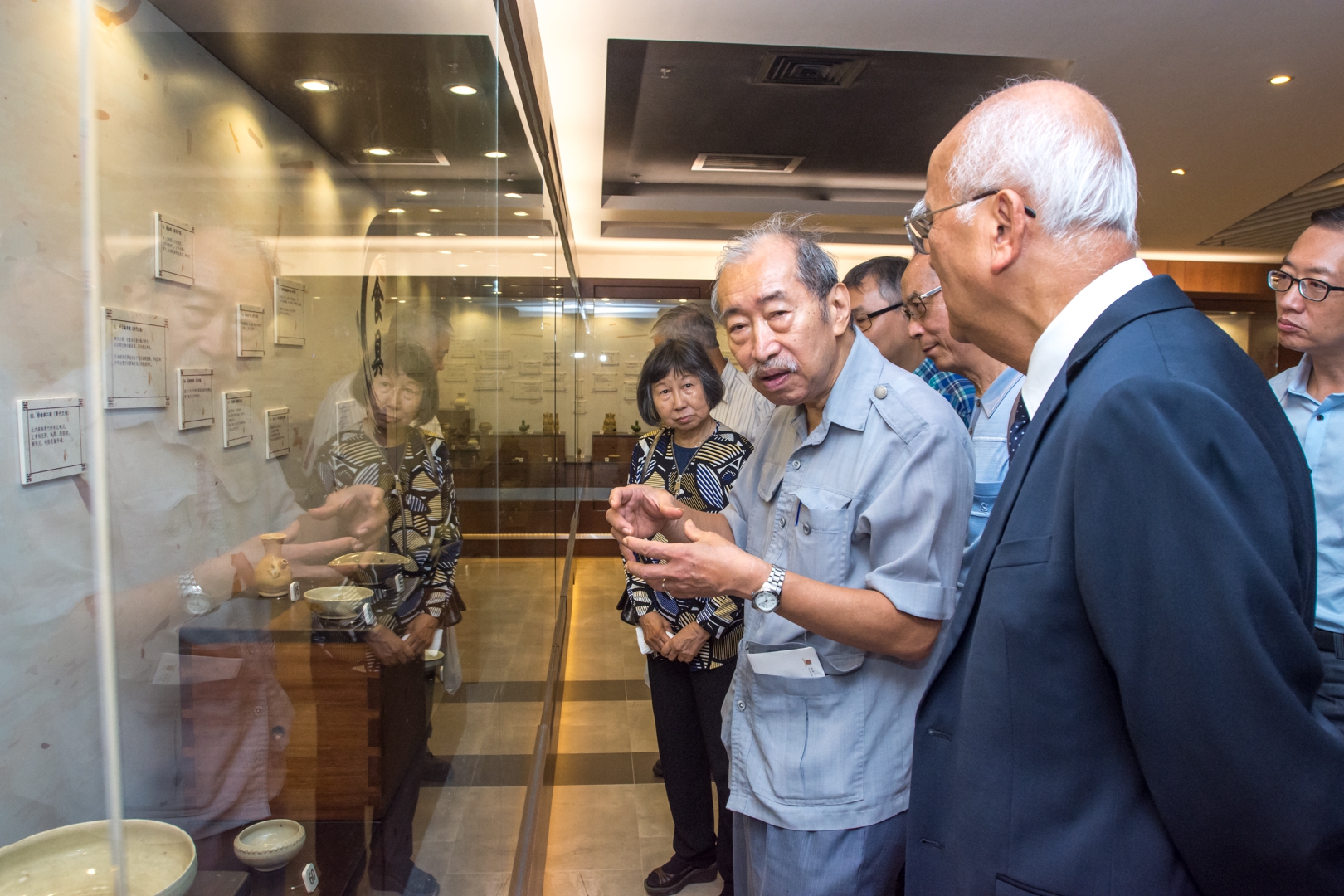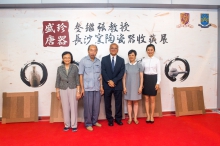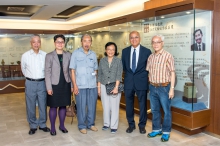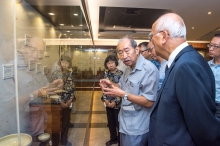CUHK
News Centre
CUHK S.H. Ho College Presents ‘Treasures from Tang Dynasty—Prof. Kai Keung Mark’s Collection of Chinaware from Changsha Kiln’ Exhibition
The exhibition ‘Treasures from Tang Dynasty—Prof. Kai Keung Mark’s Collection of Chinaware from Changsha Kiln’ presented by S.H. Ho College of The Chinese University of Hong Kong (CUHK) is on display at the College’s Chan Chun Ha Hall until 3 October 2016.
This exhibition showcases Prof. Kai Keung Mark’s collection of Tang dynasty chinaware, mainly from the Changsha Kiln, gathered during the early 1990s. It includes over 80 exhibits of various wine pots, bowls, plates, vases and bibelots. Members of the public are welcome to visit the exhibition. Admission is free.
The opening ceremony was held on 12 August. Officiating guests included Prof. Kai Keung Mark and his wife Mrs. Oi Wah Mark; Prof. Samuel Sun, Master of S.H. Ho College, CUHK; Prof. Xu Xiaodong, Associate Director of the Art Museum; and Miss Angela Ng, President of the Student Union Executive Council, S.H. Ho College.
Prof. Samuel Sun, Master of S.H. Ho College, CUHK, said, ‘Through the exhibition of Changsha porcelain in the Tang dynasty, the College hopes to enhance students’ cultural and artistic knowledge. The College also wants to take this opportunity to celebrate Prof. Kai Keung Mark’s 80th birthday and to thank him for lending generously his collection of chinaware.’
Prof. Kai Keung Mark is a collector of Chinese cultural relics, with over 30 years’ experience in collecting and appreciating Chinese antiques. He taught at the Department of Biology, CUHK for 30 years up to his retirement in 1995. Many postgraduates were under Prof. Mark’s supervision during his service at CUHK, among them Prof. Lap-Chee Tsui, the former Vice-Chancellor and President of The University of Hong Kong who was Prof. Mark’s first Master’s student.
Prof. Mark has also been for years a mentor and friend of Prof. Samuel Sun, Master of S.H. Ho College and Emeritus Professor of Biology, CUHK. This year marks the 10th anniversary of the founding of S.H. Ho College and, as part of its celebration, the College wants to give the community a glimpse of Tang porcelain culture through Prof. Mark’s collection of precious Changsha ceramics.
Prof. Mark said, ‘I chose Changsha porcelain in the Tang dynasty as the theme for this exhibition because the Changsha collection, with its diversified shapes and decorations, reflects comprehensively the design characteristics, superlative craftsmanship and innovative directions in Tang porcelain at large. We can also explore the gorgeous way of living at that time from this collection.’
Chinese culture and porcelain production rose to a new height in the Tang dynasty (618-907). Pottery manufacture was improved in nearly every aspect, making Tang porcelain available in a wide range of colours and shapes. The most important contributors to porcelain production at that time were Changsha potters who created glaze colours which the world first saw in porcelain. They energetically invented creative forms of functional ceramics, both for daily use and as art works for appreciation. The Tang potters achieved their greatest technical innovations and artistic refinements by inventing porcelain, underglaze painted décor and phosphatic glazes, perfecting high-fired celadon, and experimenting with cobalt blue glazes.
Situated at Xiangjiang port, Changsha used to be a porcelain production centre where products were transported by boat to other cities in Hunan province. Thanks to the huge market demand for porcelain in the wealthy Tang society in which people hankered after refined daily utensils, the Changsha potters created a splendid array of chinaware which is uniquely Changsha. Although the Changsha Kiln mainly manufactured celadon, its products displayed gorgeous variations in design and colour. Among its creations, wine pots and articles for daily use are the most famous. We can have a glimpse of the Tang way of living through the collection of utensils used at the time. For example, one common feature of the Tang pots is that decorations like flower and bird patterns were painted below the level of pot spouts. In contrast, decorations on the ceramics produced before the Tang dynasty were mainly placed in the upper parts of the ceramics. This practice is actually related to the pre-Tang people’s habit of sitting and putting most of their daily utensils on the ground. When they appreciated their utensils, they naturally looked downward, concentrating on the top parts. However, since the Tang dynasty, people began to use household furniture and placed their articles for daily use in a different manner, which affected the Changsha potters’ arrangement of decorations on chinaware.
Prof. Mark said we could appreciate the uniqueness of these exhibits from several aspects. First, with regard to shape, wine pots from Changsha Kiln have a pentagonal but not a round liu (the mouth of a spout from which liquids are poured), which is distinctively Changsha. Second, the handles of Changsha utensils come in many different shapes and sizes, displaying a strong Tang ceramic style. Third, the Tang porcelain was often designed to recall metalware. For instance, the Changsha potters sometimes created a sharper angle at the joints where protruding parts or decorations were adhered to a ceramic surface to mimic metalware. Examples of this method can be found in Changsha wine pots, bowls and plates.
Prof. Xu Xiaodong, Associate Director of the Art Museum, CUHK, said, ‘Changsha porcelain reached its peak in the mid to late Tang dynasty, and subsequently declined in the Five Dynasties. It was the most important type of ceramic exports at that time, with markets in Southeast Asia, the Middle East and Africa. Changsha potters often blended Chinese artistic styles with western elements to create different ceramic forms and decorations; therefore their products are significant in the study of the economic and cultural exchanges on the Maritime Silk Road during the Tang and Five Dynasties period.’
Miss Angela Ng, President of the Student Union Executive Council, S.H. Ho College, CUHK, shared her desire to learn about porcelain culture. She said, ‘I consider that promoting Chinese traditional culture can improve the qualities of a young generation like ours. These exhibits were created by Changsha potters who had made important breakthroughs in craftsmanship during the Tang dynasty, the peak period of Chinese ceramic culture. I believe the exhibition demonstrates to us the most brilliant aspect of Chinese porcelain, thus allowing us to have a deeper understanding of this cultural heritage.’
Established in 2006, S.H. Ho College of CUHK is a multicultural ‘home’ conducive to congenial learning. The College conducts a full residential and communal dining scheme. Throughout their undergraduate studies, the College’s 600 students live in one of the two spacious modern hostels and dine with the Master and other members of the College three times per week, which enable them to be acquainted with and to learn from each other through living and dining together. S.H. Ho College is celebrating its 10th anniversary this year and will organize an array of activities, with this exhibition as a prelude. For information about S.H. Ho College and its 10th anniversary celebration, please visit the College’s website: www.shho.cuhk.edu.hk.
Details of the exhibition ‘Treasures from Tang Dynasty—Prof. Kai Keung Mark’s Collection of Chinaware from Changsha Kiln’ are as follows:
|
Exhibition Period: |
Today to 3 October 2016 |
|
Exhibition Venue: |
The Gallery, G/F, Chan Chun Ha Hall, S.H. Ho College, CUHK |
|
Opening Hours: |
Mondays – Fridays: 7:30 a.m. – 9:30 p.m. |
|
Enquiries: |
3943-1440 |
(From left) Mrs. Oi Wah Mark; Prof. Kai Keung Mark; Prof. Samuel Sun, Master of S.H. Ho College; Prof. Xu Xiaodong, Associate Director of Art Museum; and Miss Angela Ng, President of Student Union Executive Council, S.H. Ho College, CUHK officiate at the opening ceremony of the exhibition.
Prof. and Mrs. Kai Keung Mark (middle), their daughter Miss Liza Mark (2nd left), and Prof. Samuel Sun, Master of S.H. Ho College, CUHK (2nd right) pose for a group photo with other guests.


